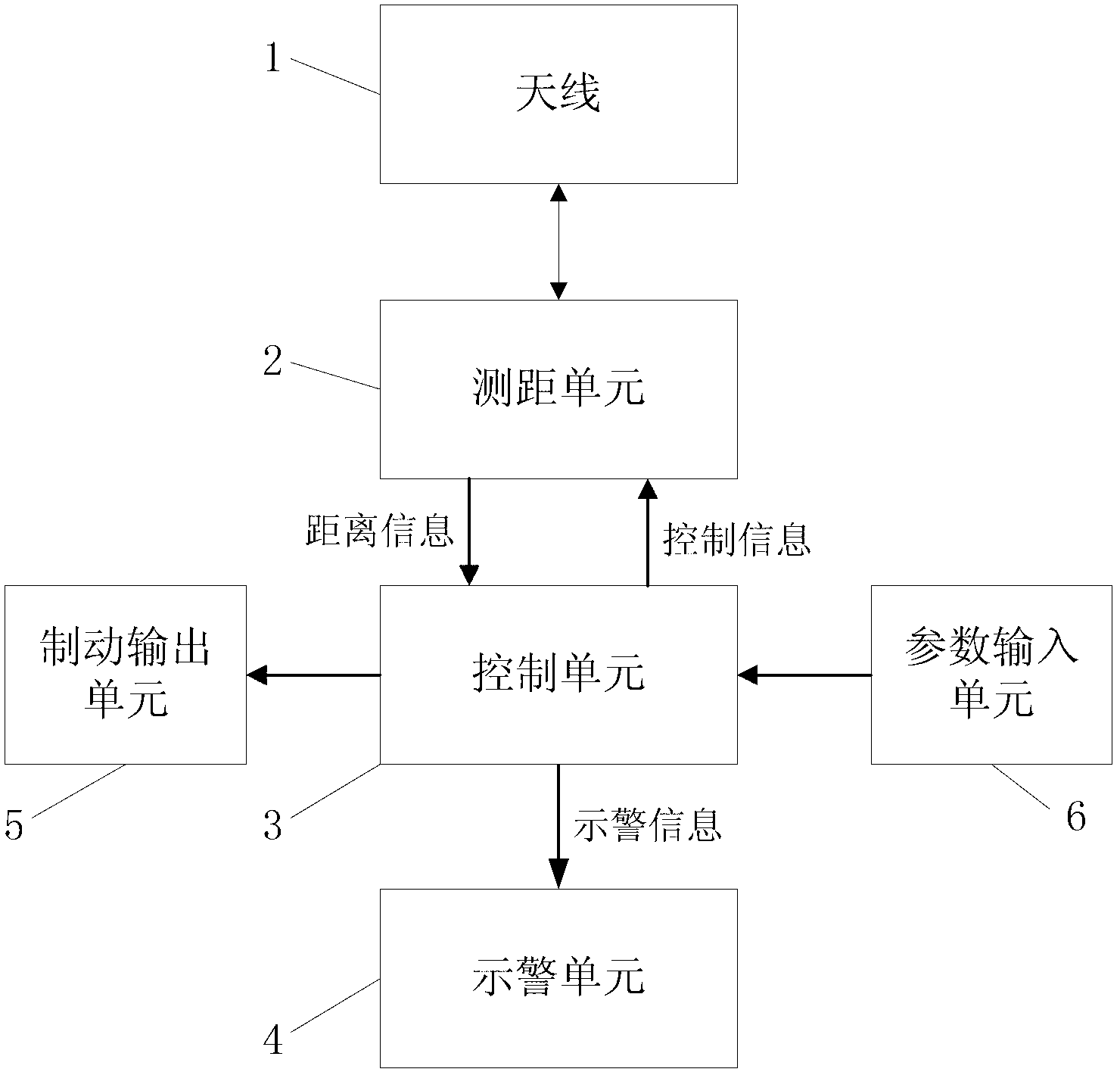Rail transit train rear-end prevention device based on pseudo-random code radio frequency distance measurement
A rail transit train and radio frequency ranging technology, which is applied in the field of rail transit, can solve the problems of difficult communication distance between wireless coding transmitter/receiver, large fluctuations in the distance between vehicles for preventing rear-end collisions, and large fluctuations in the longest distance of wireless communication. Improve driving safety and prevent rear-end collisions
- Summary
- Abstract
- Description
- Claims
- Application Information
AI Technical Summary
Problems solved by technology
Method used
Image
Examples
Embodiment Construction
[0022] The present invention will be further described below in conjunction with the embodiments shown in the accompanying drawings.
[0023] Depend on figure 1 It can be seen that the anti-rear collision device described in the present invention includes: antenna 1 , distance measuring unit 2 , control unit 3 , warning unit 4 , brake output unit 5 and parameter input unit 6 . Wherein, the antenna 1 is connected to the distance measuring unit 2 , the distance measuring unit 2 is connected to the control unit 3 , and the control unit 3 is connected to the warning unit 4 , the brake output unit 5 and the parameter input unit 6 respectively.
[0024] figure 2 The method for installing and configuring the device of the present invention on a train is shown. A single set of the device completes the anti-rear-end collision function of rail transit trains in one running direction. Usually, there are 2 directions of train running, namely uplink and downlink. The specific definiti...
PUM
 Login to View More
Login to View More Abstract
Description
Claims
Application Information
 Login to View More
Login to View More - R&D
- Intellectual Property
- Life Sciences
- Materials
- Tech Scout
- Unparalleled Data Quality
- Higher Quality Content
- 60% Fewer Hallucinations
Browse by: Latest US Patents, China's latest patents, Technical Efficacy Thesaurus, Application Domain, Technology Topic, Popular Technical Reports.
© 2025 PatSnap. All rights reserved.Legal|Privacy policy|Modern Slavery Act Transparency Statement|Sitemap|About US| Contact US: help@patsnap.com



